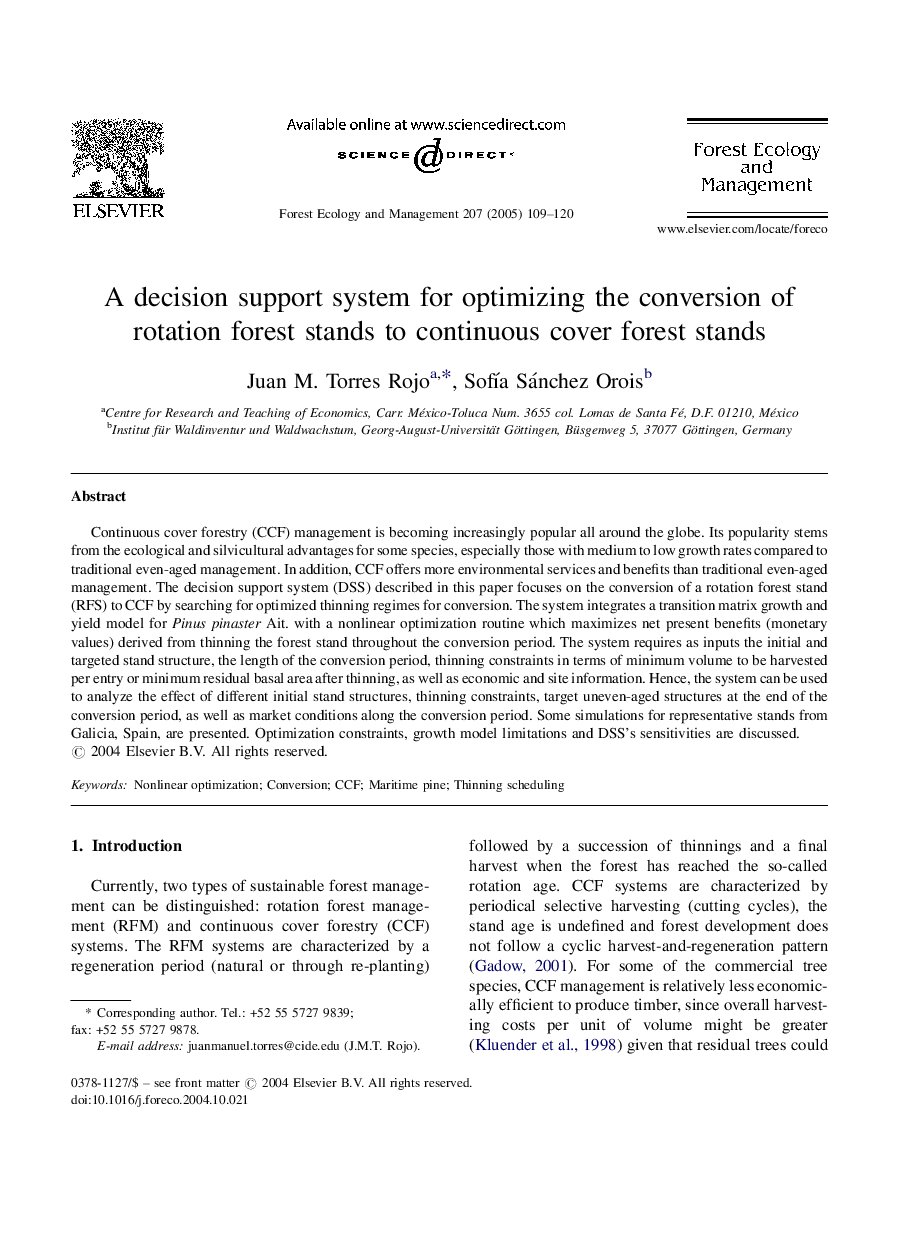| Article ID | Journal | Published Year | Pages | File Type |
|---|---|---|---|---|
| 9620443 | Forest Ecology and Management | 2005 | 12 Pages |
Abstract
Continuous cover forestry (CCF) management is becoming increasingly popular all around the globe. Its popularity stems from the ecological and silvicultural advantages for some species, especially those with medium to low growth rates compared to traditional even-aged management. In addition, CCF offers more environmental services and benefits than traditional even-aged management. The decision support system (DSS) described in this paper focuses on the conversion of a rotation forest stand (RFS) to CCF by searching for optimized thinning regimes for conversion. The system integrates a transition matrix growth and yield model for Pinus pinaster Ait. with a nonlinear optimization routine which maximizes net present benefits (monetary values) derived from thinning the forest stand throughout the conversion period. The system requires as inputs the initial and targeted stand structure, the length of the conversion period, thinning constraints in terms of minimum volume to be harvested per entry or minimum residual basal area after thinning, as well as economic and site information. Hence, the system can be used to analyze the effect of different initial stand structures, thinning constraints, target uneven-aged structures at the end of the conversion period, as well as market conditions along the conversion period. Some simulations for representative stands from Galicia, Spain, are presented. Optimization constraints, growth model limitations and DSS's sensitivities are discussed.
Related Topics
Life Sciences
Agricultural and Biological Sciences
Ecology, Evolution, Behavior and Systematics
Authors
Juan M. Torres Rojo, SofÃa Sánchez Orois,
